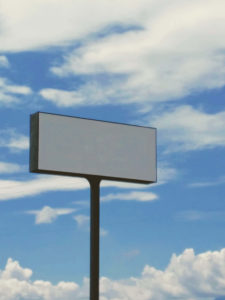Successfully communicating marketing content in a different language involves much more than simply translating information. Marketing translation requires a higher level of creativity compared to other types of translation, such as legal, technical or medical translation. We consider brand voice, emotions and tone to translate ideas, not just words.
Specialist marketing translators may be called on for texts used for purposes such as publicising a brand, selling a service, or keeping customers engaged. A good marketing translator must be a great writer in their own language, able to use language to create the same reactions in the target audience as the original copywriters intended for their own language.
What is marketing translation?
Marketing copy is not solely comprised of advertisements. Nowadays, “content is king”, meaning that the success of a brand depends not only on traditional advertising campaigns but also on the quality of the content on their website, social media, communications with customers, etc.
In order to reach a wider audience, this content needs to be available in different languages. Leaving website visitors to Google Translate product descriptions could lead to misunderstandings and rather a lot of returned items… It’s also worth remembering that 19.4% of internet content is in Chinese, 7.9% is in Spanish and 5.2% is in Arabic (Statista Jan 2020); the percentage of non-English pages grows year on year, and as non-English speakers have plenty of other options, expecting business from overseas without a significant investment in international marketing is only going to work for very specialised audiences and products.
Examples of marketing copy requiring translation are:
Offline marketing content
- Magazine and newspaper ads
- Television ads
- Catalogues
- Brochures and leaflets
- Presentations
- Business cards
Digital marketing content
- PPC campaigns and banner advertising
- Promotional videos
- Podcasts
- Blog posts
- Email marketing
- Website content, including descriptions of products and services
- Whitepapers and downloadable PDFs
- SEO (URLs, Keywords, etc)
- Social media content
Marketing Translation Challenges
Translating marketing copy requires a deep understanding of nuances, wordplay and cultural references in both the source and the target language; marketing copy tends to be very creative with language, and the translator needs to both understand the subtleties of the original message and how to convey that in translation. While a play on words might work well for the audience in a specific area, it might not make sense to a different audience or could even be considered rude. Therefore, translators who work in marketing translation need the ability (and the freedom) to localise the text – i.e. to adapt the text to suit the target audience.
Offline content also poses the challenge of physical space; the text needs to fit specific dimensions. For languages that are much shorter or longer than the target language, this can be problematic. Some online content, such as social media content and PPC ads, also has character limits. Often, a complete rethink is required to communicate an idea.

Transcreation
When marketing copy includes idioms, metaphors, puns, or when the target audience’s culture is very different from that of the source, transcreation is the best approach; perhaps the exact message of the source content won’t be conveyed in the translation, however, the intended reaction will be elicited. Transcreation consists of “recreating” the source text in a new language by freely adapting the text so that the message it carries for the original audience evokes the same emotions and implications in the target audience.
Transcreation takes more time and resources than translation, but it is widely used in marketing and advertising. Imagery, headlines, branding, colours, etc. can all be changed in order to ensure that the readers or viewers feel the same way as a result of the advertisement. Here’s a transcreation example: Intel’s slogan, “Sponsors of tomorrow,” when translated into Brazilian Portuguese, implied that Intel would not deliver on its promises immediately. As a solution, Intel decided to use “Apaixonados pelo futuro,” which translates to “In love with the future.”
Why do I need professional marketing translation?
Given the nature of marketing translation, a large audience will see your translated content. This means that were there to be any errors or culturally-inappropriate translations your brand would be damaged by this. Also, if the translation has been used in printed media, such as brochures, billboards, merchandising, or distributed in some way or other, amending errors could be costly or even impossible.
Check out our International eMarketing page for more information on our digital marketing services, or get in touch with us directly to discuss your marketing translation needs.
13 July 2020 14:23
